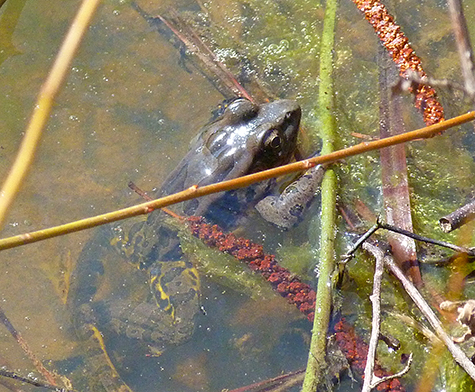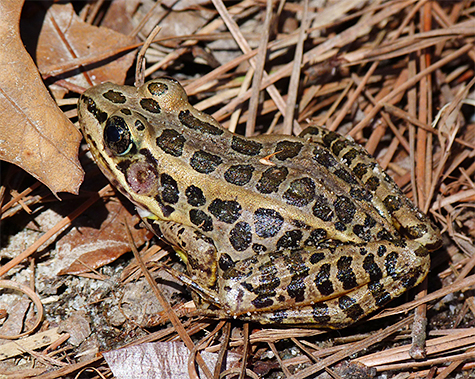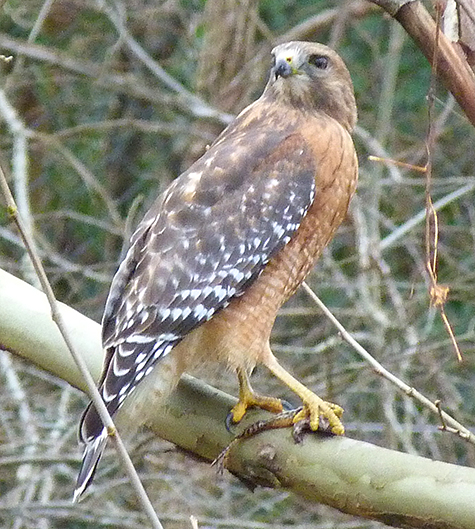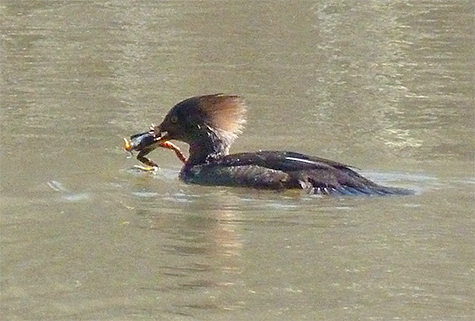It’s a risky business, this coming down to the water to breed. It pays to be discrete. There are many things that can eat you, if you’re a frog.

Most frogs in our area don’t necessarily spend all their time in water. Many species can be found some distance from water when not breeding. Pickerel frogs are one of those species. They are, however, breeding at this time of year and therefore in our Wetlands in numbers attempting to create more pickerel frogs.
But how can a frog be discrete if it’s trying to find a mate. Hundreds, sometimes thousands, of frogs may assemble in ponds, lakes, rivers or streams when the time is right. All of those amphibians are calling out in an attempt to attract a mate, fight off rivals, fertilize the female’s eggs, and then hightail it back to a safe place to spend the summer. All of that requires making noise, and much movement.

Wearing the right colors helps conceal the frogs. But, when so many frogs congregate there’s bound to be much shuffling about, jockeying for position and a whole lot of noise echoing through the wetlands. Noise and movement attract predators.
Everything from raccoons, hawks, herons, ducks, and snakes have a keen eye for the frogs as they play the procreation game.


Obviously, many frogs don’t make it through the breeding season. Many more do make it, though. And, since each female may lay as many as 2 – 3 thousand eggs, we naturalists have the good fortune to be able to see pickerel frogs each year as they come down to water to breed. It’s definitely worth the risk the frogs take each breeding season.